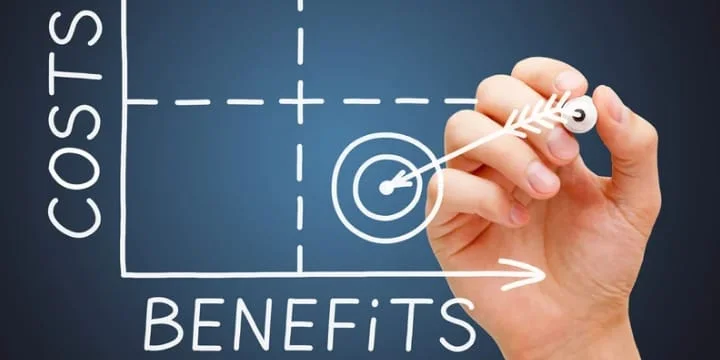In today’s fast-paced business environment, making informed decisions is crucial for success. One of the most effective tools for evaluating the viability of a project or decision is a cost-benefit analysis (CBA). By systematically comparing the costs and benefits, businesses can determine the potential return on investment and make sound decisions that align with their strategic goals. Whether you are a business analyst, project manager, or entrepreneur, understanding how to perform a cost-benefit analysis can significantly enhance your decision-making process.
A cost-benefit analysis involves identifying, quantifying, and comparing the costs and benefits of a project or decision. This structured approach helps in understanding the financial implications, justifying expenditures, and prioritizing projects based on their potential impact. In this comprehensive guide, we will walk you through the essential steps of conducting a cost-benefit analysis, explore the tools and techniques available, and provide practical examples from various industries. By the end of this article, you will have a solid foundation to apply cost-benefit analysis effectively in your organization.
Understanding Cost-Benefit Analysis

Definition and Purpose
A cost-benefit analysis (CBA) is a systematic approach used to estimate the strengths and weaknesses of alternatives. It is used to determine the best approach to achieve benefits while preserving savings. Essentially, a CBA involves comparing the total expected costs of a project against its total expected benefits, to determine whether the benefits outweigh the costs and by how much.
Purpose of Cost-Benefit Analysis:
- Informed Decision-Making: CBA provides a clear framework for evaluating the financial implications of decisions, helping businesses make more informed choices.
- Resource Allocation: It helps in prioritizing projects that offer the highest return on investment, ensuring optimal use of resources.
- Risk Management: By identifying potential costs and benefits, CBA helps in anticipating risks and developing strategies to mitigate them.
- Justification and Accountability: It serves as a tool to justify expenditures and investments to stakeholders, ensuring transparency and accountability.
Key Components: Costs and Benefits

Costs:
- Direct Costs: These are expenses directly associated with the project, such as labor, materials, and equipment.
- Indirect Costs: These include overheads and other indirect expenses that support the project.
- Opportunity Costs: The potential benefits lost when choosing one alternative over another.
- Intangible Costs: Difficult-to-measure costs such as employee morale or environmental impact.
Benefits:
- Direct Benefits: Tangible gains directly attributable to the project, such as increased revenue or cost savings.
- Indirect Benefits: Secondary benefits that arise as a result of the project, such as improved customer satisfaction or market share.
- Intangible Benefits: Non-monetary advantages, including enhanced brand reputation or employee satisfaction.
By clearly understanding and categorizing these costs and benefits, businesses can conduct a thorough and accurate cost-benefit analysis.
Steps to Perform a Cost-Benefit Analysis
Conducting a cost-benefit analysis involves a series of methodical steps. Each step requires careful consideration and accurate data to ensure the analysis is both comprehensive and reliable. Here’s a detailed guide on how to perform a cost-benefit analysis:

Step 1: Identify and List All Costs
Begin by identifying all potential costs associated with the project or decision. This step involves:
- Direct Costs: List expenses such as raw materials, labor, equipment, and technology.
- Indirect Costs: Include overhead costs like utilities, administrative expenses, and maintenance.
- Opportunity Costs: Consider the potential benefits that will be foregone by choosing this project over alternative options.
- Intangible Costs: Acknowledge less tangible costs such as impact on employee morale, potential legal implications, or environmental concerns.
Example: For a new software implementation project, direct costs might include the purchase of software licenses, hardware upgrades, and employee training. Indirect costs could involve increased IT support and administrative oversight.
Step 2: Identify and List All Benefits
Next, enumerate all potential benefits the project will deliver. Benefits can be direct, indirect, or intangible:
- Direct Benefits: Measure tangible gains like increased revenue, cost savings, and productivity improvements.
- Indirect Benefits: Identify secondary benefits such as enhanced customer satisfaction or market competitiveness.
- Intangible Benefits: Consider non-monetary advantages, including improved brand reputation, employee engagement, and strategic alignment.
Example: For the software implementation project, direct benefits might include improved efficiency and reduced operational costs. Indirect benefits could be better customer service due to faster processing times, and intangible benefits might be the attractiveness of the company to potential employees due to the use of modern technology.
Step 3: Quantify Costs and Benefits
Assign a monetary value to each identified cost and benefit. This step requires accurate data and, often, a bit of estimation for intangible items. Use the following methods:
- Market Prices: Use current market prices to estimate costs and benefits.
- Historical Data: Leverage past data to predict future costs and benefits.
- Expert Judgment: Consult with industry experts for insights into less quantifiable elements.
- Surveys and Studies: Conduct surveys or refer to studies to gauge intangible aspects.
Example: Calculate the total cost of the software implementation by summing up the purchase price, installation costs, and training expenses. Similarly, estimate the benefits by projecting the cost savings and additional revenue generated by increased efficiency.
Step 4: Compare Costs and Benefits
With all costs and benefits quantified, compare the total costs against the total benefits. This comparison can be made using:
- Net Present Value (NPV): Calculate the present value of costs and benefits to account for the time value of money.
- Benefit-Cost Ratio (BCR): Divide total benefits by total costs. A ratio greater than 1 indicates that benefits outweigh costs.
- Payback Period: Determine the time it will take for the project to repay its costs through benefits generated.
Example: If the total cost of the software implementation is $100,000 and the total projected benefit over five years is $250,000, the NPV calculation will help understand the present value of these benefits. A BCR of 2.5 would indicate that for every dollar spent, the project is expected to return $2.50 in benefits.
Step 5: Analyze Results and Make a Decision
Interpret the results of your cost-benefit analysis to make an informed decision. Consider the following:
- Feasibility: Determine if the benefits sufficiently outweigh the costs.
- Sensitivity Analysis: Assess how changes in key assumptions impact the results.
- Risk Assessment: Identify potential risks and develop strategies to mitigate them.
Example: If the software implementation shows a high NPV and BCR, the project is likely viable. However, conduct a sensitivity analysis to see how changes in cost estimates or benefit projections affect the outcome. This will provide a clearer picture of the project’s robustness.
Tools and Techniques
Conducting a cost-benefit analysis can be complex, but utilizing the right tools and techniques can streamline the process and enhance accuracy. Here are some popular tools and techniques to help you effectively perform a cost-benefit analysis:

Software and Templates for Cost-Benefit Analysis
1. Excel Spreadsheets: Excel is a powerful tool for performing cost-benefit analyses due to its flexibility and wide range of functions. You can create customized spreadsheets to list, categorize, and calculate costs and benefits, and to perform sensitivity analysis.
2. Specialized Software: There are various specialized software programs designed to assist with cost-benefit analysis. These tools often come with templates, built-in financial models, and user-friendly interfaces. Examples include:
- Crystal Ball: An Excel add-in for risk analysis and forecasting.
- Cost Benefit Analysis (CBA) Software: Tailored specifically for conducting CBAs with features like scenario analysis and graphical representations.
- Decision Tools Suite: A comprehensive suite of tools for risk analysis and decision-making.
3. Online Templates: Many websites offer free and paid templates for cost-benefit analysis. These templates can help standardize the process and ensure that all necessary elements are included. Examples include:
- Smartsheet: Offers customizable cost-benefit analysis templates.
- Template.net: Provides various templates for different types of cost-benefit analyses.
Qualitative vs. Quantitative Analysis

1. Quantitative Analysis: This involves assigning numerical values to costs and benefits, making it easier to compare and analyze. Quantitative analysis provides a clear, data-driven foundation for decision-making. It includes:
- Net Present Value (NPV): Calculates the present value of future cash flows.
- Internal Rate of Return (IRR): Determines the discount rate that makes the NPV of cash flows zero.
- Benefit-Cost Ratio (BCR): Compares the present value of benefits to the present value of costs.
2. Qualitative Analysis: This involves evaluating costs and benefits that cannot be easily quantified. Qualitative analysis is crucial for considering intangible factors that impact decision-making. Techniques include:
- Surveys and Interviews: Gather insights from stakeholders to understand intangible benefits and costs.
- Scenario Analysis: Explore different scenarios to assess potential impacts.
- Expert Judgments: Consult industry experts for their perspectives on non-quantifiable factors.
Practical Examples
To provide a clearer understanding of how cost-benefit analysis works in real-world scenarios, let’s explore some practical examples from various industries. These examples will illustrate how to apply the steps and tools discussed earlier.

Example 1: Cost-Benefit Analysis for a Marketing Campaign
Scenario: A mid-sized retail company is considering launching a new marketing campaign to boost sales.
Step 1: Identify and List All Costs
- Direct Costs: $50,000 for advertising, $20,000 for creative design, $10,000 for social media promotions.
- Indirect Costs: $5,000 for increased customer service workload.
- Opportunity Costs: Potential $15,000 loss from reallocating budget from other marketing efforts.
Step 2: Identify and List All Benefits
- Direct Benefits: $200,000 in projected sales increase.
- Indirect Benefits: Improved brand recognition and customer loyalty.
- Intangible Benefits: Enhanced market position and competitive edge.
Step 3: Quantify Costs and Benefits
- Total Costs: $85,000 (including opportunity costs).
- Total Benefits: $200,000 (direct), with intangible benefits estimated at $50,000 in long-term brand value.
Step 4: Compare Costs and Benefits
- Net Present Value (NPV): Considering a discount rate of 5%, the NPV of the campaign benefits is calculated.
- Benefit-Cost Ratio (BCR): $250,000 / $85,000 = 2.94.
Step 5: Analyze Results and Make a Decision
- With a BCR of 2.94 and significant intangible benefits, the marketing campaign is deemed highly viable.
Example 2: Cost-Benefit Analysis for IT Infrastructure Upgrade
Scenario: A technology company plans to upgrade its IT infrastructure to improve efficiency and reduce downtime.
Step 1: Identify and List All Costs
- Direct Costs: $100,000 for new hardware, $50,000 for software upgrades, $30,000 for implementation.
- Indirect Costs: $10,000 for staff training, $5,000 for maintenance.
Step 2: Identify and List All Benefits
- Direct Benefits: $200,000 in cost savings from reduced downtime and improved efficiency.
- Indirect Benefits: Enhanced employee productivity, better data security.
- Intangible Benefits: Improved company reputation, reduced risk of data breaches.
Step 3: Quantify Costs and Benefits
- Total Costs: $195,000.
- Total Benefits: $200,000 (direct), with intangible benefits valued at $100,000.
Step 4: Compare Costs and Benefits
- Net Present Value (NPV): Calculate the present value of the benefits, considering a 7% discount rate.
- Benefit-Cost Ratio (BCR): $300,000 / $195,000 = 1.54.
Step 5: Analyze Results and Make a Decision
- With a BCR of 1.54 and substantial intangible benefits, the IT infrastructure upgrade is considered a worthwhile investment.
Advantages and Limitations
Conducting a cost-benefit analysis is a powerful tool for making informed business decisions. However, like any analytical method, it has its advantages and limitations. Understanding these can help you make the most of this technique while being aware of its potential pitfalls.

Advantages of Cost-Benefit Analysis
- Informed Decision-Making: Provides a structured framework to evaluate the financial impact of decisions, helping businesses make data-driven choices.
- Resource Optimization: Helps prioritize projects and investments that offer the highest return, ensuring efficient allocation of resources.
- Risk Management: Identifies potential risks and their impacts, allowing for the development of mitigation strategies.
- Transparency and Accountability: Offers a clear justification for expenditures and investments, fostering transparency and accountability within organizations.
- Enhanced Communication: Facilitates communication among stakeholders by providing a common language and framework for discussing costs and benefits.
Limitations of Cost-Benefit Analysis
- Quantification Challenges: Some costs and benefits are difficult to quantify, particularly intangible ones such as employee morale or brand reputation.
- Assumptions and Estimates: The accuracy of a cost-benefit analysis depends on the quality of the data and the assumptions made. Incorrect assumptions can lead to misleading results.
- Time-Consuming: Conducting a thorough cost-benefit analysis can be time-consuming, especially for complex projects with numerous variables.
- Potential Bias: Analysts may introduce bias, either consciously or unconsciously, when estimating costs and benefits, affecting the objectivity of the analysis.
- Static Analysis: Cost-benefit analysis often assumes static conditions, which may not account for dynamic changes in the market or operating environment.
Conclusion
In summary, a cost-benefit analysis is an essential tool for making well-informed business decisions. By systematically comparing the costs and benefits, businesses can identify projects that offer the greatest potential for success, optimize resource allocation, and manage risks effectively. However, it is important to be aware of its limitations, such as challenges in quantification and the potential for bias, and to use complementary methods and critical thinking to support the analysis.
Frequently Asked Questions (FAQ)
What is the difference between cost-benefit analysis and cost-effectiveness analysis?
Answer: Cost-benefit analysis (CBA) evaluates the overall value of a project by comparing total costs to total benefits, expressed in monetary terms. Cost-effectiveness analysis (CEA), on the other hand, compares the relative costs to the outcomes, but the outcomes are not monetized. CEA is often used in healthcare and education to determine the most efficient way to achieve a specific objective.
How often should a cost-benefit analysis be performed?
Answer: The frequency of performing a cost-benefit analysis depends on the nature of the projects and decisions at hand. For large, long-term projects, it might be useful to conduct an initial analysis followed by periodic reviews to ensure assumptions remain valid. For smaller, routine decisions, a simpler, more frequent analysis might be sufficient.
Can cost-benefit analysis be applied to non-financial decisions?
Answer: Yes, cost-benefit analysis can be adapted for non-financial decisions by including intangible costs and benefits. While the primary focus is often on monetary values, qualitative analysis can help assess factors like social impact, environmental effects, and other non-financial elements.
What are some common pitfalls to avoid in cost-benefit analysis?
Answer: Common pitfalls include relying on inaccurate or outdated data, making overly optimistic assumptions, neglecting intangible costs and benefits, and failing to consider alternative options. It’s also important to avoid confirmation bias by objectively evaluating all aspects of the analysis.
Are there any tools or software specifically designed for cost-benefit analysis?
Answer: Yes, several tools and software programs are designed to facilitate cost-benefit analysis. These include Excel spreadsheets with built-in functions, specialized software like Crystal Ball and Decision Tools Suite, and online templates from platforms like Smartsheet and Template.net.
Call to Action
To further enhance your decision-making capabilities, download our free cost-benefit analysis template today. Subscribe to our newsletter for more expert tips and resources on business analysis and strategic planning. Share your own experiences with cost-benefit analysis in the comments below and join the conversation!














